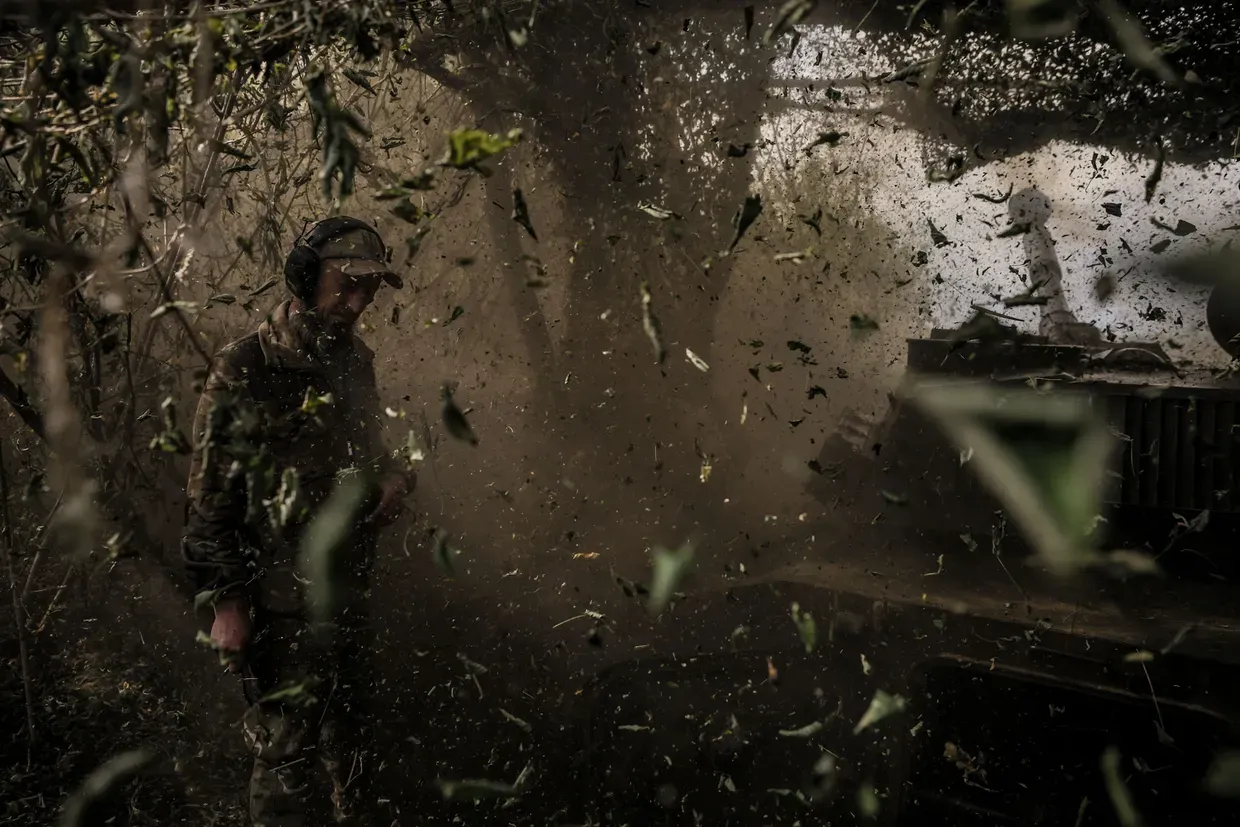SANTA FE, N.M. (AP) — Backcountry runners are embracing the physical and emotional challenge of racing with pack burros that don't always move at their pace.
Burro races honor Old West history and hinge on a delicate partnership between runner and beast of burden. Burros, a Spanish-derived word for donkeys and their wild cousins, must carry a saddle, pick, pan and shovel in homage to a bygone era and the mythical sprint by miners to a land claims office with their pack animal.
Advertisement
Some 70 teams will test their skills Saturday in a race winding through the historic, turquoise-mining town of Cerrillos in northern New Mexico. Runners will lead burros by rope on a 6-mile (10-kilometer) or 3-mile (5-kilometer) course on unpaved roads and single-track desert trails.
More ambitious burro races in Colorado can extend for nearly 30 miles (48 kilometers).
Racers often buy or inherit burros from owners who run out of money, time or patience. Others adopt burros that were corralled by the federal government to prevent overpopulation. Novices easily can rent an ass to try it out for kicks.
Quick start to the race
Advertisement
The race in Cerrillos, which provided the rugged backdrop in the 1980s Western "Young Guns," starts with a madcap sprint as competitive teams gallop to the front of the pack, and other burros instinctively attempt to keep pace.
Runners can’t ride the burro but can push, pull and coax the animal as long as they don't abuse it. Some racers swing a rope in circles — like a lasso — to encourage movement. Others on the trail cry out, “Hup, hup!”
Joe Polonsky of Monument, Colorado, took up burro racing in 2018. He described himself as a mediocre ultramarathon runner, but in burro racing he's a top contender.
“I am fortunate because Jake does like to be up front at the start of the race,” Polonsky said about his four-legged partner. “So I will let him pull me.”
Advertisement
Burros wear a halter, which is less restrictive than a horse's bridle and bit, attached to a 15-foot (4.5-meter) rope held by the runner. Some racers tether the rope to their waist and draft off the burro.
Burros are cautious, not stubborn
A burro race can devolve into a contest of wills when the animals get defiant and won’t budge.
But experienced racers say that doesn't mean the donkeys are being stubborn. They're smart and naturally curious animals. When they sense danger, discomfort or the unknown, they will lock down in place, unlike horses that quickly flee.
”If something scares them and they're nervous, they’re going to just stop and assess the situation," Polonsky said.
Advertisement
Healthy donkeys typically live 40 years or more and vary in size from waist-high “minis” that may weigh 300 pounds (135 kilograms) to bulky “mammoths.” Burros first appeared in the region more than 400 years ago, led from Mexico City by Spanish settlers and Catholic friars.
For those who rent or borrow a burro for the race, they are encouraged to show up early or even the night before to get acquainted with their racing buddy, not unlike a blind date, said Lisa Kazmar, a massage therapist from Edgewood, New Mexico, who owns four burros with names taken from Harry Potter novels.
“You don’t know what the new donkey is going to do, it can be very scary,” Kazmar said.
Modern race circuit
Advertisement
Burro racing emerged shortly after World War II in depopulated Colorado mining towns and now is an official state-heritage sport with marquee races in Leadville, Buena Vista and Fairplay that blend county-fair cheer and athleticism.
The pun-loving Western Pack Burro Ass-ociation manages the modern race circuit that extends from the Tombstone Donkey Dash in Arizona to a Weekend at Burney race in Cassel, California, and a new “burro stampede” this year in the Magdalena Mountains of New Mexico. Tennessee got in on the action five years ago with a race held annually in April.
Race and team sponsors include veterinary clinics, as well as brands selling sneakers, hydration drinks and beef jerky.
At Cerrillos, the teams compete for Western belt-buckle trophies, including a “last ass” award for the final finisher.
Advertisement
Success in racing doesn't come easy, according to Shane Weigand of Edgewood, New Mexico, a construction manager, burro race organizer and backcountry outfitter for burro-pack trips and “tequila-burro” weddings.
“You have to spend a lot of time on the trail with your burro, building up that relationship and trust,” he said.
.png)
 German (DE)
German (DE)  English (US)
English (US)  Spanish (ES)
Spanish (ES)  French (FR)
French (FR)  Hindi (IN)
Hindi (IN)  Italian (IT)
Italian (IT)  Russian (RU)
Russian (RU) 








Comments